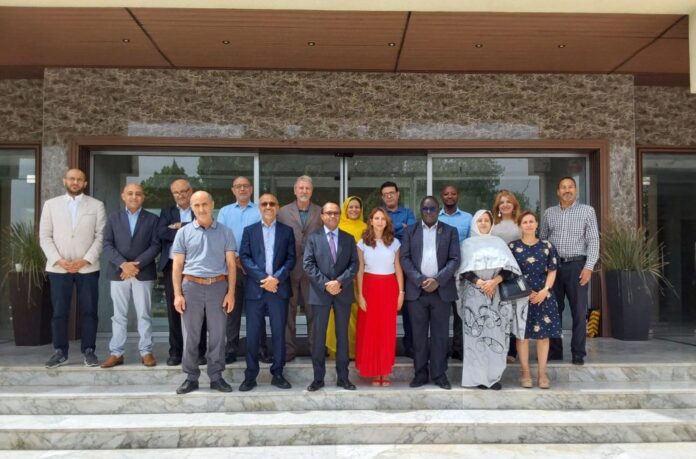Tunisia has expressed interest in implementing Geographic Information System (GIS) mapping for laboratory functions among North African countries. This initiative aims to create detailed visual representations of laboratory capacities and capabilities across the country.
The candidacy emerged during Africa CDC’s first meeting on GIS mapping for public health with seven North African countries, which included Algeria, Tunisia, Saharawi, Libya, Morocco, and Mauritania, held from 26-28 June.
“The training focused on understanding GIS mapping in North Africa, experiences with its implementation, and the advanc ement level of various GIS initiatives in the region,” said Dr. Aytenew Ashenafi Eshete, Programme Manager, Laboratory Networks and Systems at Africa CDC.
Geospatial mapping of laboratory functions and capacity has proven to be an effective tool for identifying critical gaps, planning improvements, optimizing laboratory networks, and establishing robust specimen referral systems. This initiative aims to evaluate laboratory capacities throughout Africa using GIS mapping to address existing gaps. The LabMap Project aligns with Africa CDC’s strategic priority of enhancing the resilience and responsiveness of laboratory networks to health threats. It also supports the WHO AFRO Regional Strategy for Health Security and Emergencies, which emphasizes evidence-based planning for capacity-building interventions in the healthcare system.
In collaboration with ASLM, Africa CDC has mapped existing laboratory capacities in 18 Member States. However, North Africa has not participated in any GIS mapping programs. “We intended to get a buy-in for them to be part of the GIS mapping program to strengthen the laboratory network in Africa,” said Dr. Aytenew.
“Broadly, GIS mapping for laboratory capacity can greatly enhance the management, analysis, and visualization of laboratory resources and capacities,” he added. “It can be effectively utilized for data collection and integration, capacity mapping and visualization, coverage analysis, and decision support, including improving resource allocation, enhancing outbreak response, and increasing accessibility.”
The training revealed that North Africa has a good understanding of GIS mapping and adequate infrastructure to handle related tasks, including human resources, infrastructure, and data analysis capacity.
“Most of the data available in North Africa is not included in GIS mapping, which means the geographic information system lacks the spatial and attribute data necessary for effective analysis and visualization. This can result in incomplete analysis, inefficient resource allocation, and limited decision support,” Dr. Aytenew explained.
Using GIS for laboratory capacity primarily focuses on enhancing the management, analysis, and visualization of laboratory resources to improve public health outcomes. GIS plays a crucial role in resource allocation and optimization, emergency preparedness and response, public health surveillance, data visualization, and decision support.
“We use the information to establish diagnostics network optimization,” said Dr. Aytenew. “Beyond mapping laboratory capacities within a specific country or region, another valuable application involves compiling and comparing laboratory information across different countries. This approach can provide insights into global health capacities, disparities, and areas for collaboration.” Following the training, the plan is to start implementing the GIS mapping tool in one country. “Tunisia expressed readiness to understand GIS mapping, and we will proceed with Tunisia as the first country,” said Dr. Aytenew.



